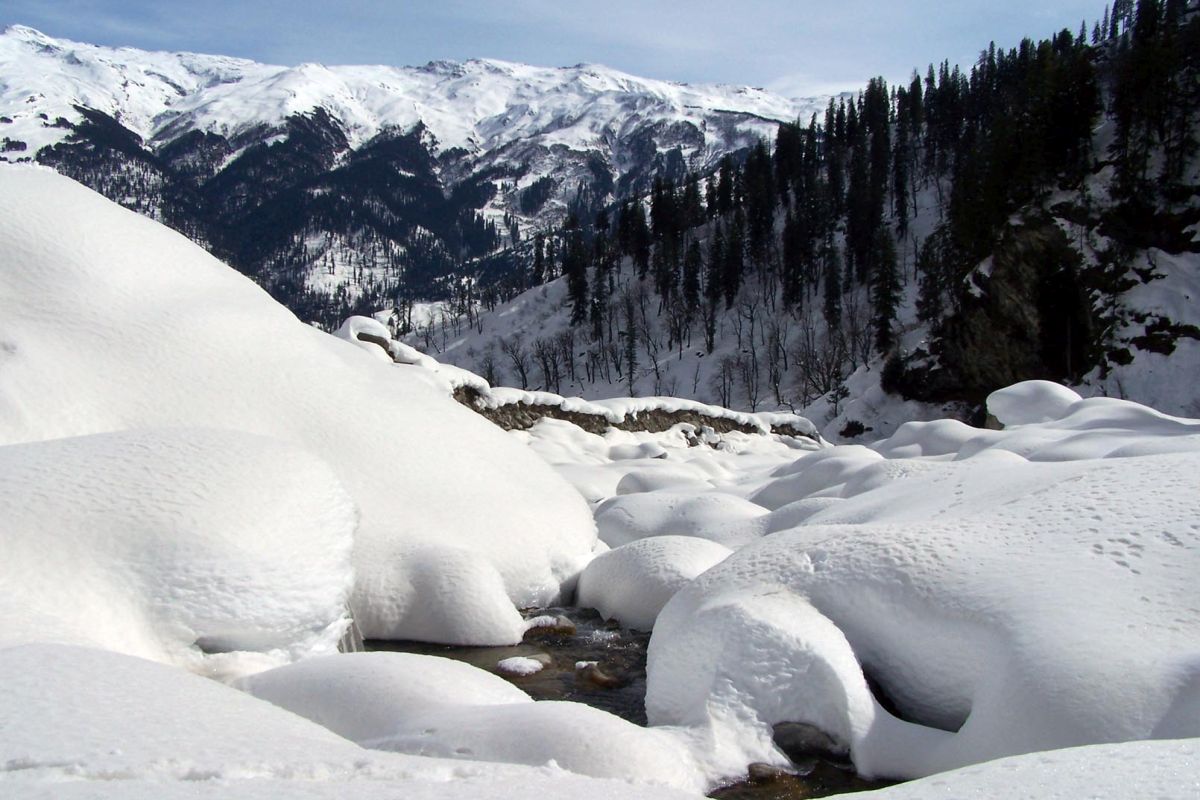Congress Govt in Himachal is going to fall: BJP
Thakur said that the people of the state had given a chance to the Congress government for five years; however the Congressmen themselves have failed to handle their own government.
Though the phenomena can’t be attributed or associated with the rapid melting of glaciers in Himachal Pradesh and Himalayas, environment experts said it could prove beneficial for glaciers in the Himalayan region.

The phenomena is recorded for the very first in the last two decades as earlier the snow used to melt by the end May or July month on these passes. (SNS)
Amid concern over rapid melting of glaciers in the Himalayas, there is good news for environmentalists as mountain passes of Rohtang, Baralacha, Kunjum, Shikula have recorded heavy deposits of snow till July.
The phenomena is recorded for the very first in the last two decades as earlier the snow used to melt by the end of May or July month on these passes.
Though the phenomena can’t be attributed or associated with the rapid melting of glaciers in Himachal Pradesh and Himalayas, environment experts said it could prove beneficial for glaciers in the Himalayan region.
Advertisement
“The heavy accumulation of snow up to 4-5 feet on Rohtang, Baralacha, Kunjum, Shikula passes is certainly a good for the environment in the Himalayas,” Senior Scientific Officer at State Centre on Climate Change, Dr SS Randhawa told The Statesman.
Randhawa said this is an annual phenomenon as the state witnessed prolonged winter season, resulting in snowfall in higher reaches of Himalayas till April-May.
The glaciers would also benefit with the heavy accumulation of snow till July, he added.
In addition, record snowfall was witnessed for the first time in decades on western Himalayan region and it was due to these factors that snow hadn’t melted on mountain passes till July end.
However, the snow on Rohtang Pass had started to melt owing to emission of smoke from vehicles but Baralacha and Shikula Pass, located at an altitude of 16,800 feet are still covered under a thick blanket of snow.
Environment experts are of the view that this phenomenon would help the depleting environment conditions but it remains to be seen whether the area continues to receive heavy snowfall next year too or not.
Besides this, the snow deposits are not only attracting tourists to the state but it has also brought cheers on the faces of farmers in the cold desert of Himachal, Lahaul Spiti district wherein locals are getting enough water for irrigation purposes during summers. (Lahaul Spiti district receives the lowest rainfall in the country and locals generally face a shortage of water during the summer season.)
The heavy snow might have been causing problems in travelling in these areas as Shikula Pass is yet to be opened for traffic but it is being considered as a good omen from environment point of view.
It is worthwhile to mention here that a recent study by the Environment department had revealed that glaciers are melting at a rate of 20 metres per year in Himachal Pradesh.
Experts had pointed that climate change was resulting in Himalayan glaciers receding fast as was the case across the world and they are at increased risk of melting owing to erratic weather patterns.
Advertisement